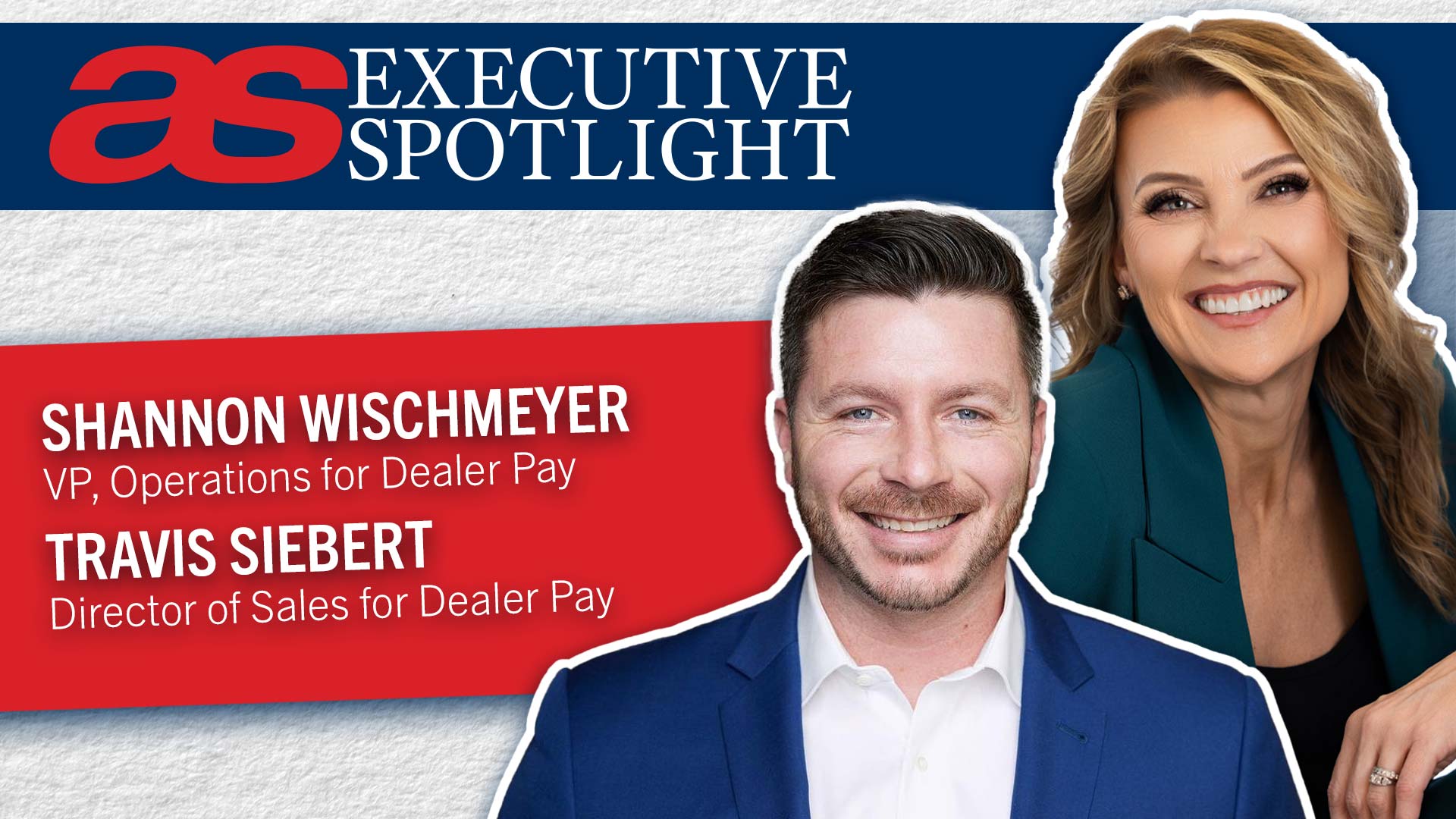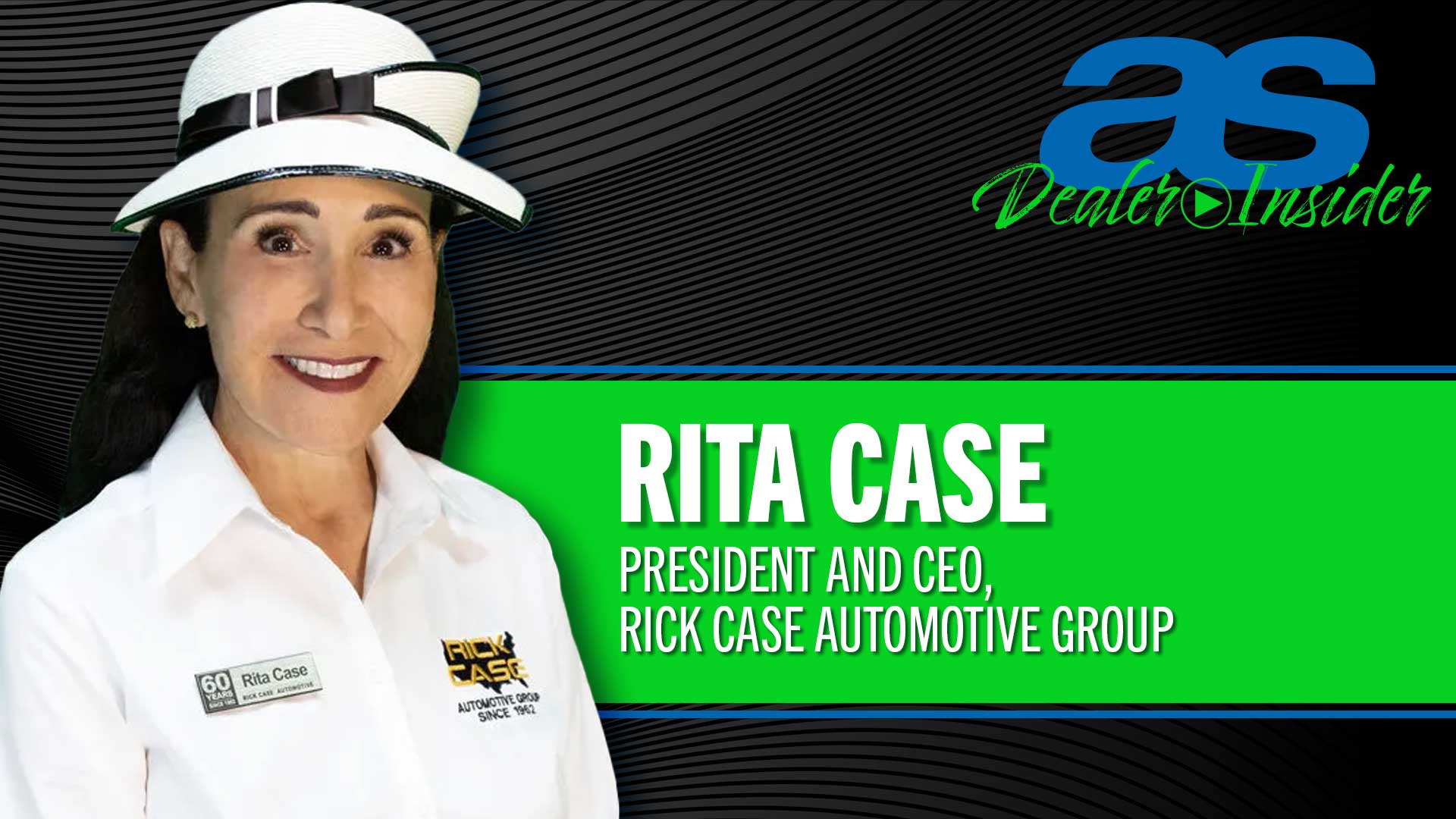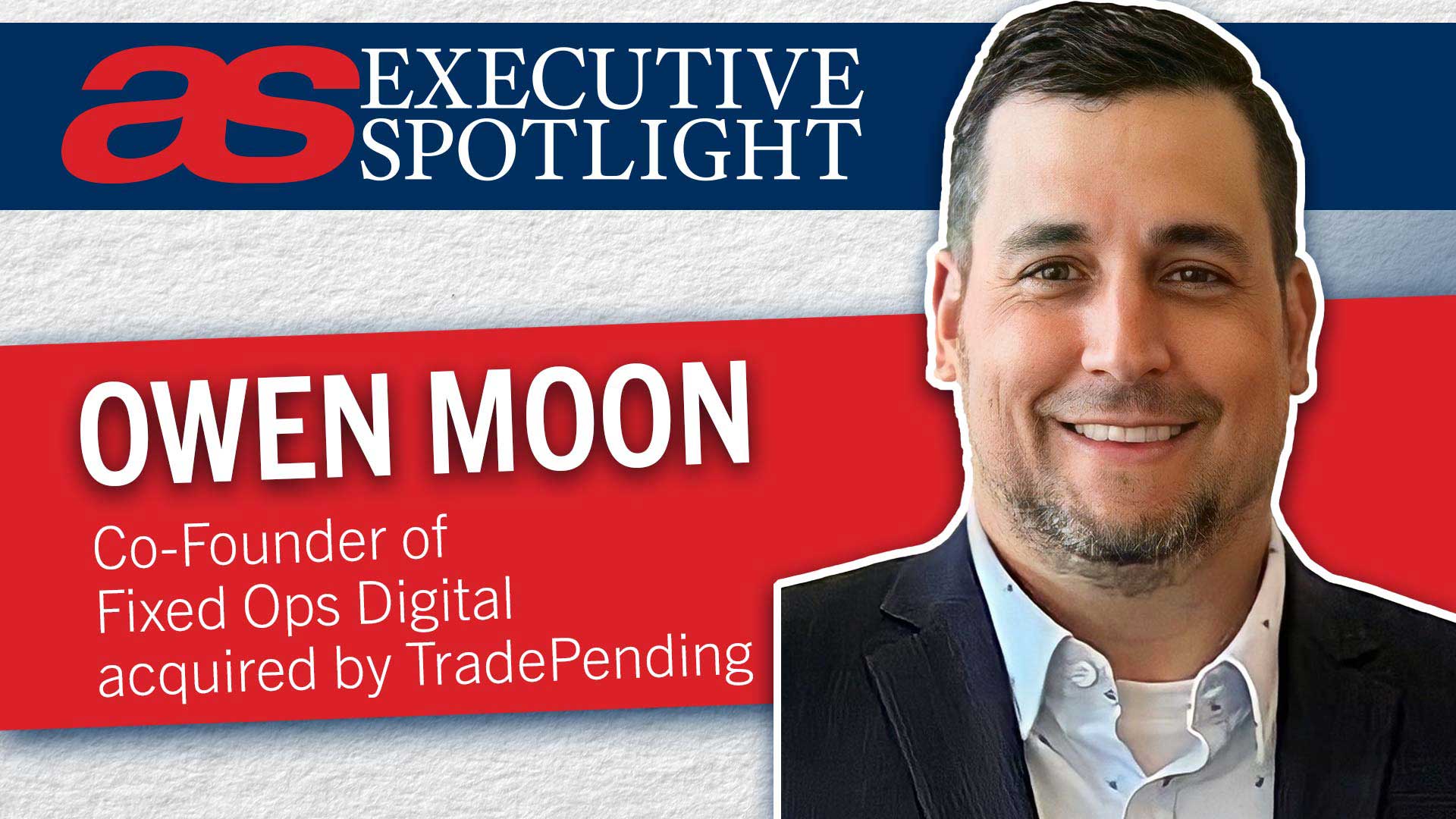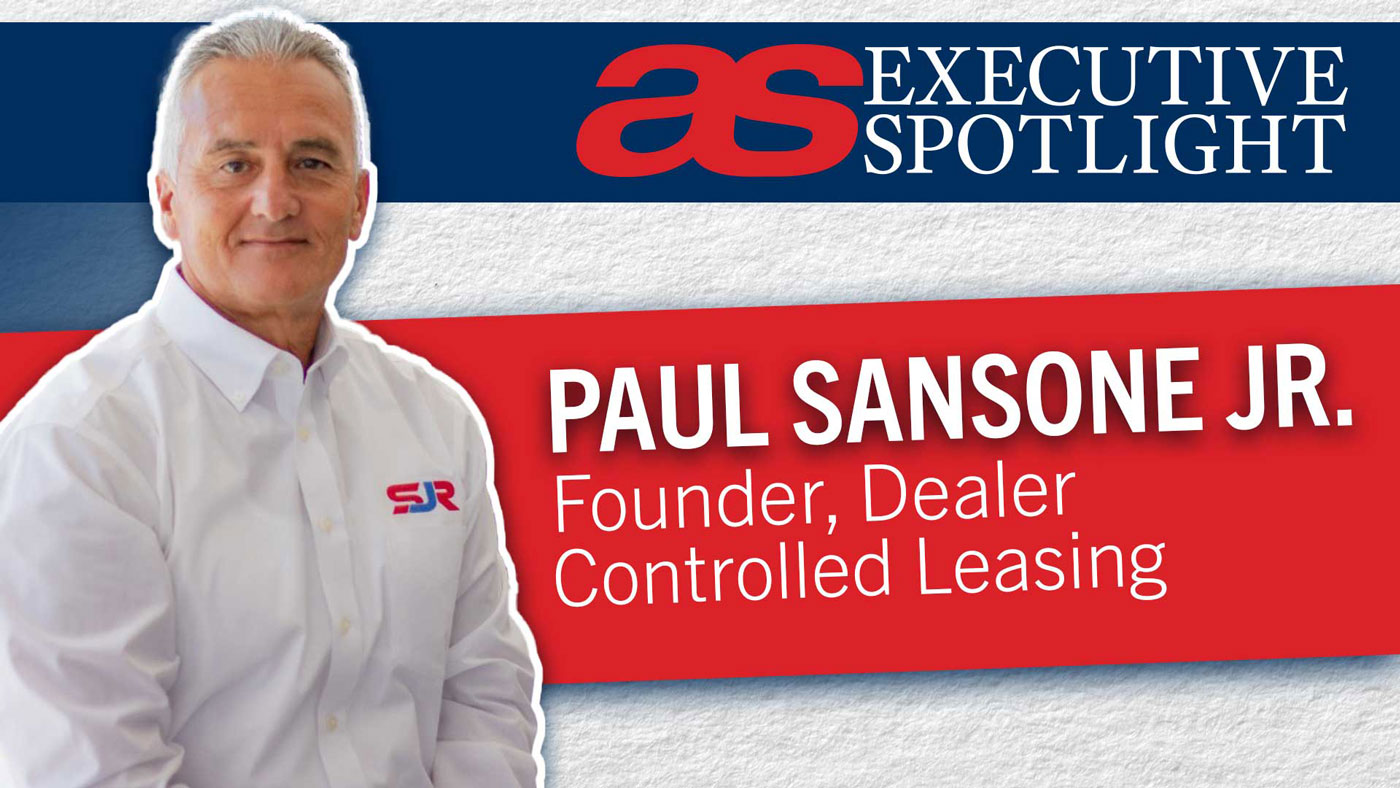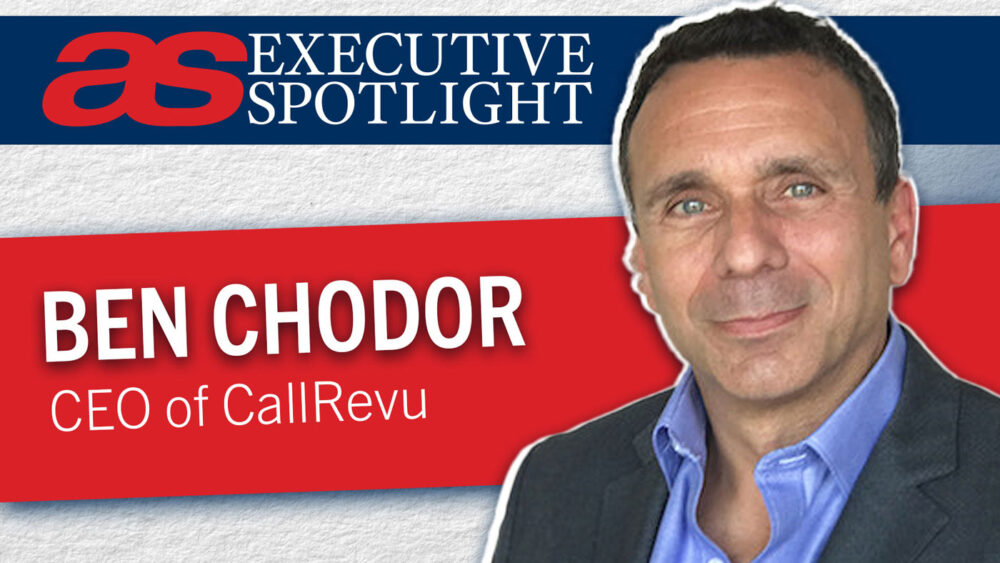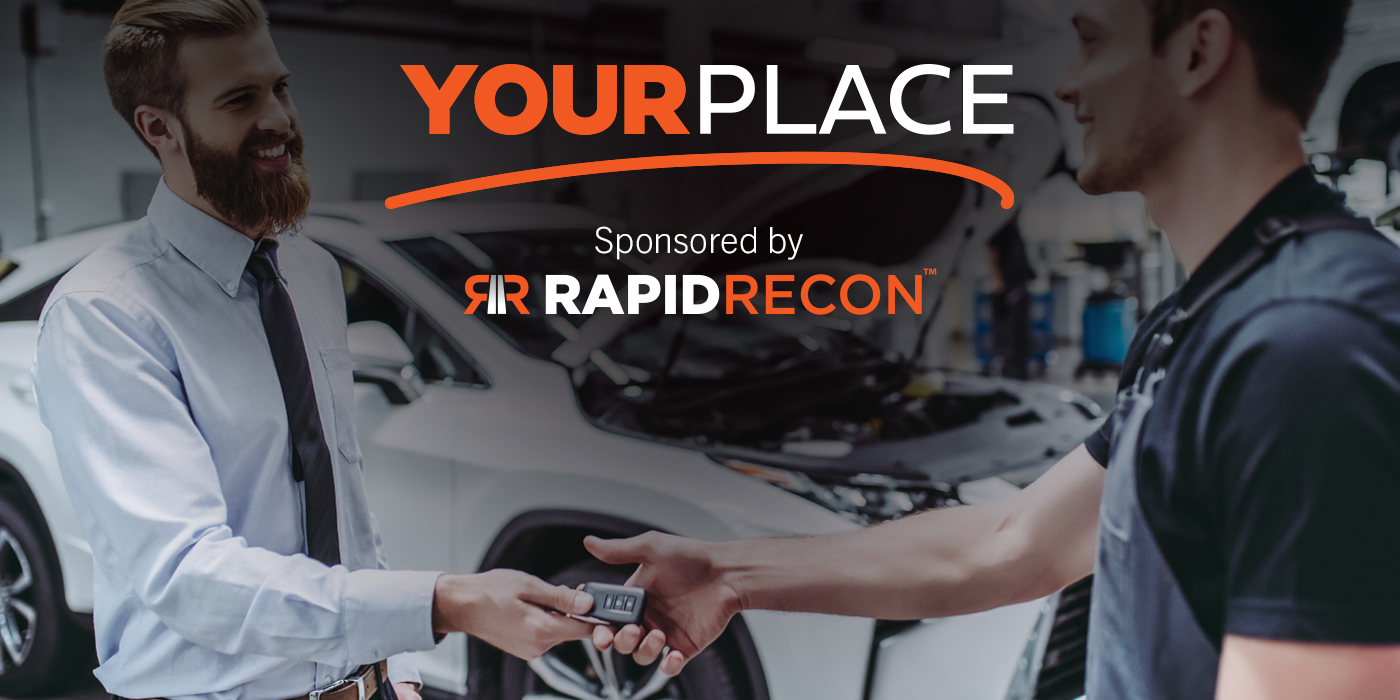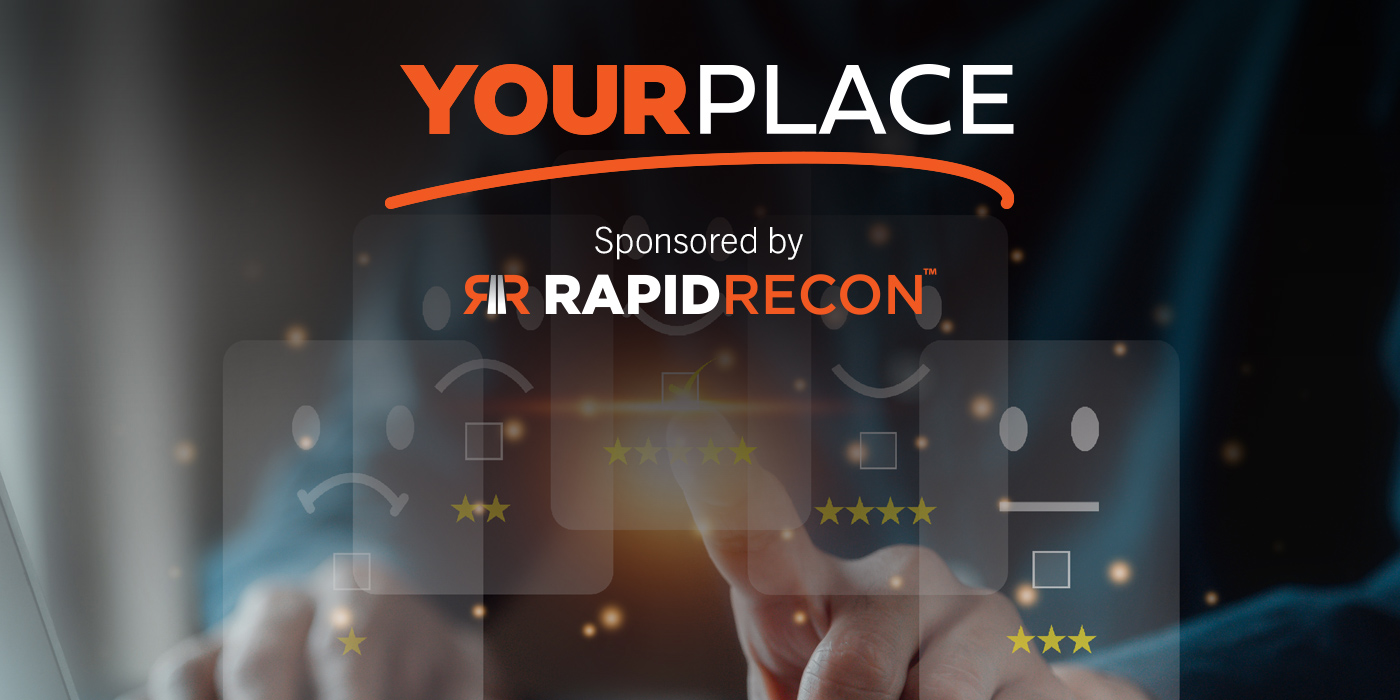In this episode, Rapid Recon Founder and CEO Dennis McGinn speaks with Anthony Martinez, director of client services at Rapid Recon.
Dennis and Anthony discuss recon basics as well as how implementing standard procedures can help dealerships get cars ready to sell faster. They also review the best ways to ensure that everybody’s on the same team and on the same page.
For more from Rapid Recon, visit rapidrecon.com.
For all of the Your Place episodes, where Rapid Recon welcomes guests to chat about retail automotive markets, strategies and insights, click here.
Video transcript:
Dennis McGinn (00:23):
Hello, and welcome to your place. I’m Dennis McGinn, founder and CEO of vehicle reconditioning and communications company, Rapid Recon. At Your Place, we visit guests at their place of business to engage in interesting conversations about the auto industry. Today, we’re talking with Anthony Martinez, the director of client services at Rapid Recon. Welcome Anthony. Thanks for taking the time to speak with us today, before we get going, what is client services and what customer facing responsibilities, this client services handle and for our viewers, what qualifies you to talk about our, this topic today at Rapid Recon about recon basics?
Anthony Martinez (01:11):
Well, thanks for having me, Dennis the client service department of Rapid Recon is all the teams that actually are front facing with the customer’s post-launch for lack of a better term cus our customer service department we’re composed of three different teams currently our immediate support line, our account management and our performance consultation team. So what qualifies me to talk about this is I myself was once a customer for Rapid Recon and I was the director of a reconditioning center for an auto group in central Florida. And we were pushing about 1200 cars through a month.
Dennis McGinn (01:50):
That’s a lot of cars. How did, how did you actually make all that work, Anthony?
Anthony Martinez (01:56):
Well, it’s not one simple answer, you know, the, I guess if I had to put it under one umbrella, it was just implementing standard procedures. You know, that number includes both used internal work and new car prep. And it was our responsibility to make sure those cars got to the sales lot as fast as possible, both used and, and new. And the best way to serve the dealership was to provide a, a quick turn, a quick inventory turn. So speed was of the essence. So while using standardization as the tool, my metric was speed and that that’s really what I focused on from acquisition of the used vehicle or drop off of the new vehicle to the moment it got on the sales line and sometimes assisting the sales department with tracking how long it actually took for, to sell to their customer as well.
Dennis McGinn (02:51):
Anthony, I have a question I’d like to throw at you because you are so well qualified. A lot of people that I talk to these days think that solving the reconditioning problem is a piece of software that they can order something and their problems will go away. And, but I look at it very differently and as I believe you do that, it really is much more of a production environment than it is just a, a list of things you’re trying to do and pass it around with people. But what, what’s your view on that? What do you, how do you think of the important parts of this? How do they come together within your operation?
Anthony Martinez (03:34):
I totally agree with you. Rapid Recon or any software solution is really just like a compass or a roadmap to get you back on the right path. It’s for us, we’ve always considered a communication tool first and foremost. It’s what brings the different departments of a dealership together. It’s what allows a lot porter, a used car director and a recon mechanic to all be on the same page and communicate with each other. So it’s really just the tool, but it’s not the absolute playbook. And what you need is a dedicated reconditioning team. You need to have standards and operating procedures in between everyone’s role. And that is, what’s more important than a software tool. You could have that software tool and you could have a user just enter in everything they do and just use it like a journal, but that’s not going to solve any problems. It’s not going to alert anyone that work is ready to be done or pass on that chain of custody of I’m done with this operation. It’s your turn, your turn in the production line.
Dennis McGinn (04:43):
You know, I think I remember the early days of this business, when we called it kind of the hot potato handling, that was how everybody thought about it. After you got over the finger pointing and giving everybody something in their hand, they could say, well, I know what I’m supposed to be working on. But now what’s going on in the industry is pretty, pretty dramatic. It seems like the whole industry has turned down to the used car business. And it just everybody’s wants to know what’s going on. Now you have a consulting group that of people that have been there done that. They’ve they’ve they’ve done all this. What do you see? What are they seeing out there? What are, what are your customers asking you to help ’em with these days, especially the ones that really get it.
Anthony Martinez (05:35):
Mm-Hmm <affirmative> the ones that really get it, what they’re looking for are ways to fine tune and improve. So it’s really easy to knock out a lot of the, the basic non-value added timing. Why was that car along the fence for three, four days, no one doing anything? So once we get rid of that low hanging fruit, and once we’re able to have a scenario where, okay, you know, that the easy stuff’s been taken care of, we’ve trimmed the fat at this point. Now we’re looking to improve our performance. And that’s usually when our consultation team, our performance team starts getting involved when they’re able to now just change some best practices. Some great examples are how can we do more with the same amount of people? How can we multitask? Where can we cross train? How can we implement possible vendor procedures within our own team?
Anthony Martinez (06:32):
Dispatching and dispatching practices are always a, a big request from us. And not just that, what we’re seeing, especially in the last year or so with staffing shortages, et cetera, is how to recruit and retain the appropriate staff for reconditioning. What kind of mechanics do we look for? Who would be a good person to own the process who would manage it and, and what parts? So we’re starting to get a lot of requests for our consultation on actually setting up a reconditioning center, recruiting we’ve even had one of our consultants be involved in the hiring process for our customers to be part of the interview process vetting, to make sure that they’re getting the, the right manager to run the reconditioning. So I’m seeing a lot more of that.
Dennis McGinn (07:17):
Do your people go to the customer’s locations at all?
Anthony Martinez (07:22):
Absolutely. So on a daily basis during business hours, you can always count on them for a virtual visit, kinda like a Teledoc type of scenario where you just want to call someone up and share screens and go over some best practices. And we offer that for that more immediate need for problem solving, but we also offer a deep dive solution. This is an operation that we’ve come up with that we refer to as the recon edge, so they can get an edge on your own reconditioning process. And we will just send a consultant or, or a couple because we have different experts in different areas. Maybe this particular situation would benefit from a variable and a fixed performance manager. So we’d send both of them there and they basically just live in that store for a couple days.
Anthony Martinez (08:06):
They’re monitoring and observing all the different departments. They’re offering training and the whole time they’re looking at the process as a whole holistically from the beginning to the end, so that they can brief the team and then follow up with, with a virtual treatment. It’s, you know, we can always offer best practices on, on our own experience and, and what we’ve learned from our thousands of customers virtually, but there’s always an element that is missing when you can actually be there. See, watch that vehicle get dispatched, watch the parts person prepare for that ticket. And sometimes just inspiration and epiphanies will happen. Oh, this is what’s taking you half an extra day. Well, what if we tried this and they come up with an action plan,
Dennis McGinn (08:52):
What’s the best practices way to get people to rally around the two metrics that I think we talk a lot about average days in recon and time to line are time to getting the car sale ready? What are the best ways to ensure that everybody’s on the same team on the same page?
Anthony Martinez (09:16):
When you’re dealing with a car dealership, there are a lot of different metrics and there’s a lot of different milestones KPIs, you know, performance metrics and the key to it is to bring everyone for the same goal. So when you’re dealing with reconditioning, the biggest measurement I would use is time. Like I mentioned earlier, and that’s what I would bring everybody into. And I’m of the school that the more people that you involve in the process, the better, I think that if you bring in your technicians, if you bring in your service advisors, your lot porters, et cetera, if you bring everyone in, there’s more of a sense of ownership. Now you sprinkle on that, the goals of time and you’re broadcasting, Hey gang, this is where we are now. This is where we need to be. The boss wants us at five days.
Anthony Martinez (10:09):
We’re about six days. I think if we do these things. And so think of it as, as like those fundraisers with a thermometer, you’re just trying to fill up that gamification, to get everybody excited, to work towards the same goal. And that’s important because it gives a sense of job satisfaction to let a lot Porter know that their role of the dealership or a, a cashier or a Booker that their role of the dealership can impact the business. And they can actually see the, the fruits of their labor. They can see that, Hey, because I booked that ticket because I moved that car because I gave that approval that much faster look, how we’ve all lowered our times and a great way to to really push that is, and they call our dealerships. A lot of people work to their pay plans because it’s obviously set up to incentivize them with their compensation to match their job performance.
Anthony Martinez (11:01):
And I would take that further with time, you know, instead of worrying about possible gross or throughput, I would also sprinkle in there some metrics on time. Can your department achieve an average time of this? Maybe even add some tier and you can even split it off to the different sub-departments perhaps you set a goal for how long your expectation is for the parts person to procure, to procure apart. How long would it take a detailer to detail a car? And then overall, how long does the dealership take from acquisition to frontline? And so now that everybody’s on the same board for the time it takes for the entire vehicle and the time it takes for their role in it, Rapid Recon has become more of a unification tool because everyone’s logging in and back to your original point, that hot potato, you don’t wanna be that person that’s causing the entire timeline to, to grow and grow. So there’s a big, big sense of I’m done your turn. Okay. It’s not me. It’s not me. I’m moving on. And, and that’s when you really start to see that non-bid time go away.
Dennis McGinn (12:04):
The I know I’ve seen you and your team put together some lot of recommendations. You’ve spoken at NADA about best practices and ways to systematize things and measure and manage particularly around things like cosmetic work with a car. And because you know, we know the customers now see everything. I mean everything’s online. Everything is in is there for them to see. And so the mechanical parts of it, everybody kind of knows they want, they expect the car to be mechanically ready for them to, to, to drive cosmetically. Those things are harder to deal with. If you see something that is a, a problem, but down or a scratch or something, what, how do you, how do you look at that? How do you put that together with delivering the time to line that the co that the dealers want?
Anthony Martinez (13:07):
The biggest problem that I see in car dealerships, I as far as reconditioning is a decentralization of the process and, and what I mean by that is different parties are involved and accountable for the reconditioning process. And sometimes it’s not even considered an, a process in its entirety. You’ll have a group of people responsible for the mechanical portion and when they’re done, then it, the vehicle moves on down or another spot in the dealership for cosmetic. And then maybe it’s staged again for photographer and vendors, et cetera. And no one is really orchestrating the entire process. So the biggest thing that I would say to help improve the metrics of time is to have one person or, or one group of people responsible for the entire reconditioning process from acquisition to frontline. And that includes the cosmetic. Now, once you’re aware of the time and where of the age of the unit, you can mix and match and you can say, well, look, I know this came out first, but maybe we’re gonna prioritize this other vehicle through the detail because that’s, what’s needed to fill a requirement on the sales lot that they’re missing.
Anthony Martinez (14:15):
So when you’re able to look at the entire process to include cosmetic, you can make better decisions to, to fulfill the sales department instead of just finishing your job and then having someone else pick up from it. And a lot of times what, what happens is when you have different teams not communicating with each other, not sharing the same goals, they don’t have the same emphasis for time. You know, a detail’s life is all about quality, not about speed. Same thing with a mechanic. It’s all about quality, not speed. So what you have to have is somebody separated from it that is accountable for the speed that can help facilitate that. What ideas can you bring to the table as a leader to keep that mechanic in their bay? What ideas can you bring and what kind of management can you provide to make sure that when that vehicle pulls up in the detailers bay, that detailer has all the tools they need and all the training, they need to make sure that it, and it’s not a surprise what the car needs that they know it’s gonna be a, a family van that’s gonna need stain removal order removal, or they know it’s an auction vehicle that might just need a quick touch up.
Anthony Martinez (15:18):
So all of that organization needs to come from a higher level, seeing the entire process. So that’s the biggest that’s probably the biggest practice we preach centralize your reconditioning process. Some dealerships have the luxury of having a separate little facility or, or a separate team. Separate team is the best way to go. But if you can’t have that, and if you have to share resources with your retail side, at least have a dedicated process to where an individual is, the person running. The whole thing, that if I’m a general manager, I can go to Jane DOE or John DOE and say, tell me what’s going on with the timeline of the vehicles. When can I expect this one vehicle, et cetera, etcetera,
Dennis McGinn (15:57):
You know speed is important and cost control is important. What’s your advice on how you balance those two things? I mean, what tools do you need to make sure you’ve got your people dialed in your, your, your speed is you, you know what you can do but you’re keeping your costs in line with expectations.
Anthony Martinez (16:25):
I would say flexibility and options. You know, a lot of people will joke. Rules are meant to be broken. Well, sometimes standards are there. So, you know, when to vary and then come back to it. So I gave a, I touched on one example a moment ago where I talked about you, Don don’t, you don’t have to be a slave to, to, well, number one was number one. So it’s gotta stay number one in the entire process. You need to be flexible enough to know that if something’s gonna happen, that would provide lead time. If I’m ordering a windshield, a bumper, or maybe it’s a Highline vehicle that has a part coming from Europe, well, am I stuck there or can I leapfrog another car or can I change the, the process? Can I be flexible enough to know that, you know what, I’m gonna go ahead and send that to the vendor now so that it’s not just sitting there doing nothing.
Anthony Martinez (17:13):
And that, that flexibility is, is really important for being able to adapt to any problems and any halts in the process of, of the assembly line. I would also say again, gotta be flexible. Don’t be afraid to teach another department, another task to save time. I’ll give you an example. There’s no reason why a mechanic can’t do a cosmetic inspection. The, you know, the mechanic is already walking around the vehicle. The mechanic is already intimate with the vehicle right up close. So to your question about catching a dent or scratch, or what’s the best way without absorbing time, why would we have two separate processes, first, a mechanical inspection in the work, and then the cosmetic and doing that separate. Why not have the mechanic themselves do it? And some of the examples and best practices where we’ve executed this, it’s worked out very well, and we’ve seen you know, you pay the mechanic just a little bit more or offer them another line item on their estimate for it, but it definitely saves time and an entire step in the process. So just be open to that kind of flexibility. There, there are a lot of
Anthony Martinez (18:29):
Cosmetic repair solutions that your in-house staff can take care of. You can train your detailers to do headlight restoration. You can train your detailers to do blackout or odor removal with the right equipment. So just being flexible to bring those processes into your other process or to your main process is key. And that’s how you keep things going quickly by, by identifying a gap in time and then filling it with something that needs to be done, that’s pending. And then the reason why though you wanna have those absolute standards is for once you’re done with that task, you can snap back to the way you’re supposed to do so you’re not just continuing to veer off in the wrong direction.
Dennis McGinn (19:12):
You know, Anthony, this is really an important area in this industry, as you well know that the area that we serve, the used car business, which is used to be a 100,000-mile and over cars were kind of at the end of their life. Now, now we’re seeing they’re at the beginning of a new life. People are saying, well, wait a minute, the Hondas and Toyotas, and those cars are built to last a couple hundred thousand miles. And so it seems like, and I don’t know if you feel the same way that we’re getting new energy into this marketplace, because the opportunity to sell cars at different tiers is becoming a bigger deal. And the demand is certainly there. I mean, COVID came along and messed up everything, right? I mean, so the, the new car, the supply, the chips, the whole thing, and here we are sitting here looking at how do you handle volumes, which you’ve already experienced large volumes.
Dennis McGinn (20:21):
And, how are you gonna keep the cost down and the speed up. And, and it just seems like it’s really a fascinating opportunity that’s sitting right here and we’re kind of facing that. And I, I so appreciate your time and what you do for your customers and what you do for your team of people in building the, the expertise and going in and helping the customers, whether it’s virtually, or they’re on site to help them actually get to the next stage of this. And it it seems like the, the, the need for what we’re doing is, has gotten to be much more urgent these days than we ever imagined. And maybe with that, I’d like you to just make a few closing comments on your thoughts about what we’ve talked about. And then I will let you go and get back to the business.
Anthony Martinez (21:22):
Thank you. Yeah, I appreciate it. You’re bringing up a great point and although I’ve noticed our customers have always struggled with, well, how can we save this to be a retail option? You don’t want that knee-jerk reaction up, send it to the auction type of situation. And when I reflect a little bit more on those type of workflows, where we see just vehicles going to, to a wholesale that wouldn’t need to be, I’ve noticed the commonality is trust, because there’s a lack of transparency. There’s a lot of, well, I, I don’t know if what you’re saying is legitimate, or you’re just trying to do this or that, you know what, just send it to the auction. And there’s so much opportunity loss there so much growth that you’re just giving away, leaving on the table, but with our customers with rapid.
Anthony Martinez (22:12):
And if you’re following a lot of these standards and you’re involving the different departments that trust is there, that transparency is there. And if you’re flexible with different options and your team, because you have a dedicated process and you’re using the same people, they understand, Hey, this is what it would take to make this car both generate profit and still stay on the lot. And you’re starting to see because of photos, videos, PDFs different mm-hmm <affirmative> parts options, cetera. Now just like our, their customers are more informed with the internet. The used car department is more informed of what would it take to make this a, a car to keep on the lot, especially in these times where every car is precious. And so it’s, it’s, it’s really exciting to see that when that’s happening and you’re starting to see that an estimate will come through and there’s no questioning there’s no I have to see it. Let me walk around. How bad is it now? You’re now they’re, they’re, they’re clicking together. They’re speaking the same shorthand, and it’s a really quick approval process to the point where we’ve got mechanics getting yeses and nos while the car is still on the rack. That’s not parking out somewhere aging. And so all of that works towards the time. And that’s exciting to see, especially now when every vehicle matters.
Dennis McGinn (23:36):
Well, I love that every vehicle matters and it’s exciting times as difficult as it is with the economy and things like that. But, I really appreciate your time, Anthony, and appreciate the leadership that you provide in this area. And the fact that you’ve been there and done that, you’ve built volume that three days we know it can be done. And now you’ve got a team of people helping our customers to evolve to that level themselves. So thank you for your time, and thank you for all that you do for the customers that have the need to deal with both the speed the leadership, and also managing cost. So I want to bid you good day. Thank you for your time, and I’ll look forward to the next time we can chat about this.
Anthony Martinez (24:29):
Thanks for having me, Dennis.

